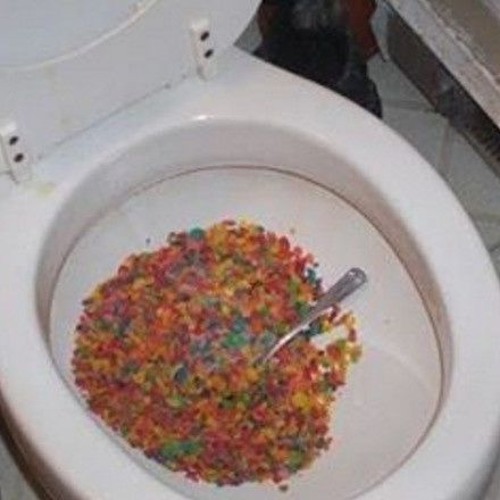Are You Capable to Flush Food in the Toilet?
Are You Capable to Flush Food in the Toilet?
Blog Article
We've noticed the article about Think Twice Before Flushing Food Down Your Toilet listed below on the net and concluded it made perfect sense to discuss it with you on this page.

Intro
Many people are often confronted with the problem of what to do with food waste, especially when it comes to leftovers or scraps. One usual inquiry that occurs is whether it's fine to flush food down the bathroom. In this post, we'll explore the reasons why people might consider purging food, the effects of doing so, and alternative methods for proper disposal.
Reasons individuals could think about flushing food
Absence of awareness
Some people may not recognize the possible harm brought on by purging food down the toilet. They may wrongly believe that it's a harmless technique.
Benefit
Purging food down the toilet might look like a quick and simple service to disposing of unwanted scraps, specifically when there's no neighboring garbage can available.
Idleness
In some cases, people may simply pick to flush food out of large laziness, without taking into consideration the effects of their activities.
Consequences of flushing food down the toilet
Ecological impact
Food waste that ends up in rivers can add to pollution and injury marine ecosystems. Additionally, the water made use of to flush food can strain water sources.
Plumbing problems
Purging food can result in stopped up pipes and drains pipes, triggering costly pipes repairs and inconveniences.
Sorts of food that need to not be flushed
Coarse foods
Foods with fibrous textures such as celery or corn husks can get tangled in pipes and create obstructions.
Starchy foods
Starchy foods like pasta and rice can absorb water and swell, leading to blockages in pipelines.
Oils and fats
Greasy foods like bacon or food preparation oils need to never ever be purged down the commode as they can solidify and cause obstructions.
Proper disposal techniques for food waste
Making use of a waste disposal unit
For homes geared up with waste disposal unit, food scraps can be ground up and flushed via the pipes system. Nevertheless, not all foods are suitable for disposal in this way.
Recycling
Specific food packaging materials can be recycled, reducing waste and decreasing environmental effect.
Composting
Composting is a green way to take care of food waste. Organic products can be composted and utilized to enrich soil for horticulture.
The relevance of proper waste administration
Reducing ecological harm
Appropriate waste management methods, such as composting and recycling, aid reduce air pollution and maintain natural deposits for future generations.
Protecting pipes systems
By avoiding the method of flushing food down the bathroom, property owners can prevent pricey pipes repair work and keep the stability of their plumbing systems.
Conclusion
Finally, while it may be tempting to purge food down the commode for benefit, it is necessary to comprehend the prospective effects of this activity. By taking on correct waste administration methods and getting rid of food waste properly, people can contribute to healthier pipes systems and a cleaner setting for all.
FLUSH FOOD DOWN THE TOILET?
FLUSHING FOOD CAN CAUSE BLOCKED DRAINS IN YOUR HOME
All of the plumbing fixtures in your home are connected to the same sewer pipe outside of your home. This outdoor sewer pipe is responsible for transporting all the wastewater from your home to the Council sewer mains. Even small pieces of food that go down the kitchen sink can cause problems for your sewer. It should therefore be obvious that flushing larger bits of food, such as meat, risks a clog in either the toilet itself or the sewer pipes. Flushing greasy food is even more problematic because oil coagulates when it cools, coating the interior lining of your pipes.
THE TOILET IS NOT A BIN
Food isn’t the only thing that people shouldn’t be flushing down the toilet. People use the toilet to dispose of all kinds of things such as tampons, makeup wipes, dental floss, kitty litter and even underwear. Water goes to great lengths to educate residents about the high costs and stress placed on wastewater treatment systems simply from people flushing the wrong stuff down the toilet. It costs taxpayers millions of dollars each year, and homeowners thousands in blocked drain repairs.
FLUSHING FOOD IS A WASTE OF WATER
Flushing food is a waste of our most precious resource - water. In June this year Level 1 water restrictions were introduced to protect water supply from drought conditions. Much of New South Wales continues to be affected by prolonged drought with recent figures revealing up to 97 per cent of the state remains in drought. Depending on whether you have a single or dual flush toilet, every single flush uses between five and 11 litres of water. In the current climate this is a huge amount of water to be wasting on flushing food that should be placed in the bin (or better yet, the compost).
https://www.jabplumbingsolutions.com.au/blog/can-you-flush-food-down-the-toilet

As an enthusiastic person who reads on , I figured sharing that blog post was a smart idea. Enjoyed our piece? Please share it. Let another person find it. I thank you for reading our article about Flushing Food Down the Toilet?.
Call Today Report this page